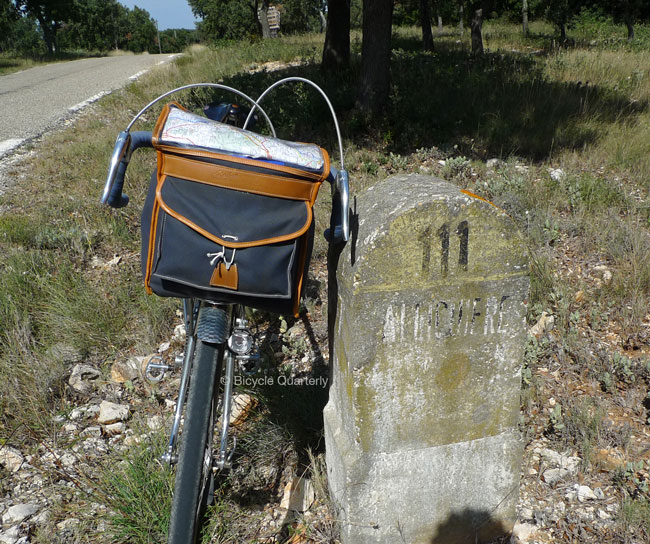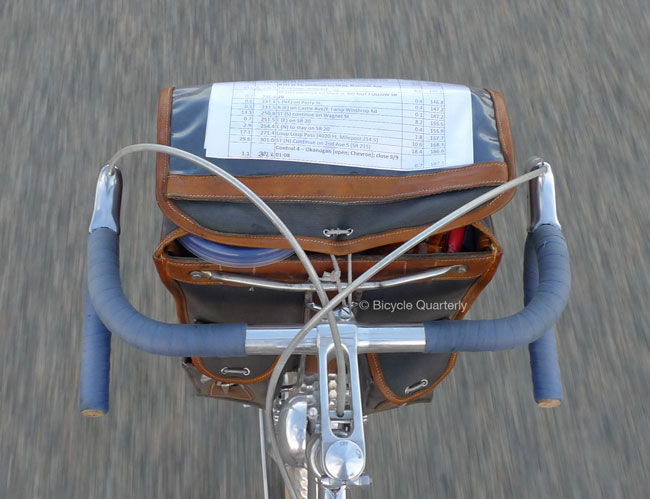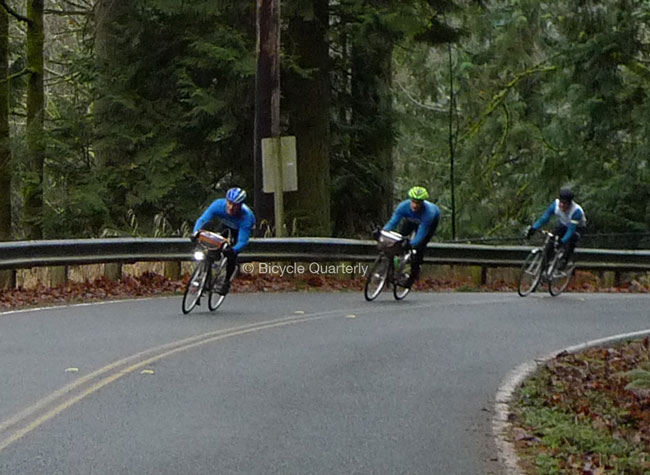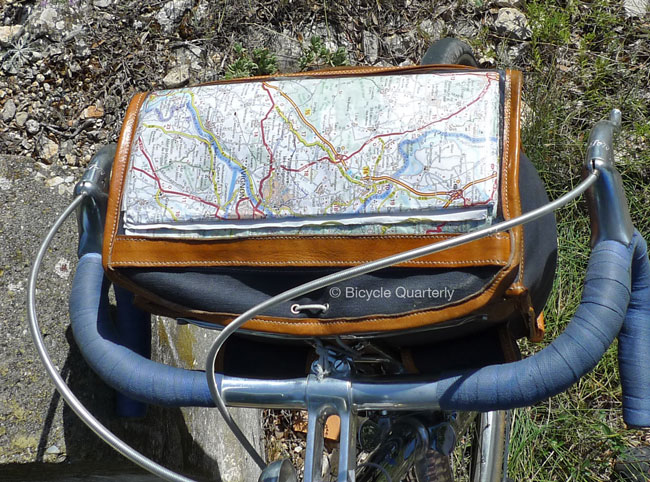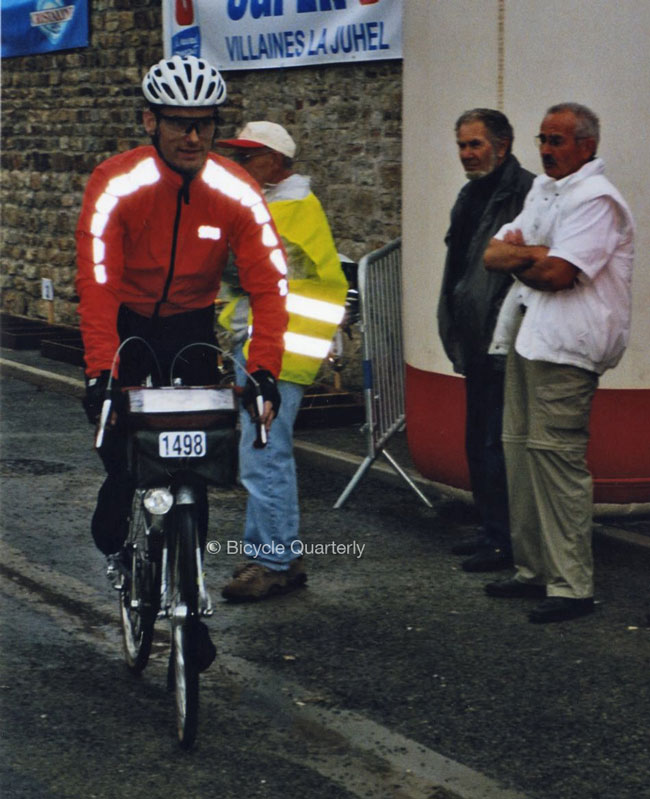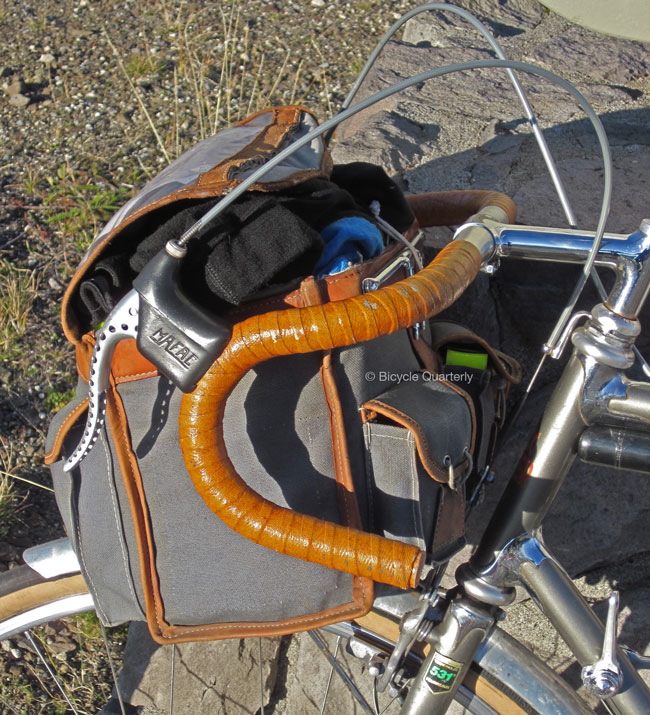Unimprovable: Berthoud Handlebar Bag
Berthoud handlebar bags are among the few things in this world that are so well-designed and have proven themselves for so long that they have become unimprovable. These bags first were introduced by Sologne in the 1950s, and they have been made almost unchanged ever since. Handlebar bags have many advantages over other ways of carrying your luggage.
The most important is that you can access your food, clothes or camera without dismounting the bike. Some do this while riding, but even if you prefer to stop before opening your bag, it is still very convenient to not have to dismount and deal with stabilizing your bike as you access a bag on the rear of your bike. On a tour, you’ll probably take many more photos if it is easier to access your camera: Just put a foot down, grab your camera, shoot, and then continue on your way.
The Berthoud bag’s flap opens forward, so air resistance automatically closes it as you ride. This makes it easy to access the contents while riding at any speed. I only close mine with the elastic closure when the road is so bumpy that things might jump out of the bag otherwise.
Carrying your bag in front also improves the handling of your bike – as long as your bike’s geometry is designed for a front load. You balance your bicycle by moving the front wheel from side to side. Thus, a front load can be balanced immediately. To balance a rear load, you first move the front wheel, then wait for the rear wheel to follow with a lag and with reduced amplitude. This makes balancing a rear load less immediate. And when you rise out of the saddle, a handlebar bag exhibits none of the “tail-wagging-the-dog” effect that you get with a rear load.
A handlebar bag also provides a convenient spot for your map or cue sheet. Having your directions visible at all times greatly reduces your likelihood of getting lost, and it is safer than fumbling with cue sheets in ziploc bags that you retrieve from your jersey pocket.
The Berthoud bag’s map case is sized to fit the French Michelin maps. Most maps from all over the world use a similar format.
Berthoud bags are made from cotton duck with leather edging. Any thoughts that these material choices are somehow “retro” and offer less performance than modern materials are quickly dispelled when you ride in the rain. In the 2007 Paris-Brest-Paris (above), I rode for 50 hours in almost non-stop rain, and the bag was completely dry inside when I arrived at the finish. The fabric is waterproof because its fibers swell as they get wet, forming a tight seal against one another. There is no waterproof coating that wears off over time. (The bag was seven years old when I rode PBP.) The flap keeps out water even when you open the bag while riding in the rain. In addition to being waterproof, the material is lightweight.
The Berthoud bags’ capacity is amazing. Since the flap is pushed down by the air resistance as you ride, in addition to being held by an elastic closure, you can overstuff it without risking to break zippers or having your things fall out. On a crisp day that starts cold and warms up, it is nice to have a place to put tights and extra jerseys. Or you can go by the Farmers’ Market on the way home from a ride and stock up on fresh vegetables.
The small pockets are handy for carrying things you want to access without digging through the main compartment: wallet, lip gloss, a small camera, a helmet light… This capacity does not mean that you always need to carry a lot of stuff. Often, my bag is almost empty, but being able to carry what I need has allowed me to contemplate rides that I might not have undertaken otherwise.
Berthoud bags are amazingly durable. When I took the photo above, the bag had been in regular use on my Alex Singer for 11 years. It has acquired a nice patina, but it remains 100% waterproof and functional. I still use it every time I ride this bike.
The best way to mount a handlebar bag is on a front rack (not hanging from the handlebars), so the weight sits as low as possible. The bag also needs to be supported at the top, so it does not swing from side to side. On many randonneur bikes, the top of the bag attaches to a “decaleur” on the stem, which keeps the bag away from the handlebars, so you can access all hand positions. The decaleur also doubles as a quick release, allowing you to take the bag with you when you lock up the bike. (Two prongs on the bag attachment fit tightly into two tubes on the stem-mounted part, so you just pull upward to remove the bag.)
Many makers have tried to improve upon the classic Sologne/Berthoud bags. Berthoud offers a “luxury” version that replaces the elastic closures with leather buckles. I personally do not favor it, because this increases the weight, and more importantly, the buckles are difficult to operate with cold fingers. Other companies have made handlebar bags from Cordura and other modern materials. These materials are not waterproof for long, and the bags tend to be heavier because they need additional stiffeners. In the end, the old Sologne/Berthoud bags still are the most functional, most elegant and most durable handlebar bags you can buy. We are proud to offer them in our program.


